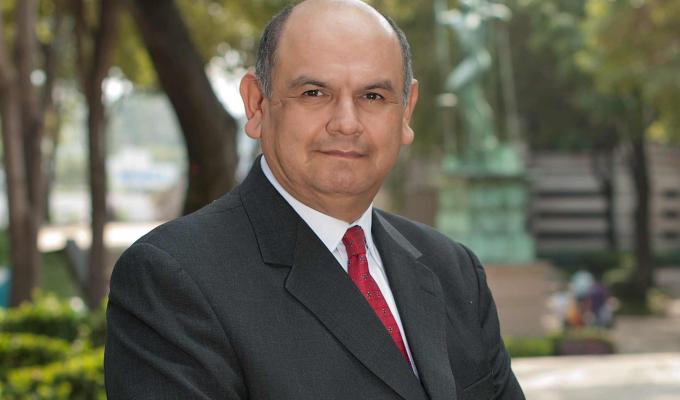This past March, 694 MBA students traveled to one of 18 campuses to study with peers and learn from international faculty in an initiative called Global Network Weeks. Students visiting Israel’s Technion in Haifa learned why the country is called the Start-Up Nation; those who arrived at the University of British Columbia’s Sauder School of Business in Vancouver took a deep dive into green energy; and students who traveled to Jakarta learned from faculty at the University of Indonesia how digital entrepreneurship empowers women. Not a single dollar, euro, peso, renminbi, or shekel changed hands among participating schools to make this extraordinary educational experience possible. This is the power of networked management education.
Global Network Weeks were the fist program initiative of the Global Network for Advanced Management (GNAM) when it launched in 2012. The network had its beginnings when the Yale School of Management in New Haven, Connecticut, convened a meeting of deans and directors from 20 business schools to discuss a collaborative effort. The network was founded on three shared beliefs: that the stakeholders of management education are increasingly global; that no one school can have a truly global reach; and that schools can gain tremendously from trade and collaboration.
We believed that a network offered many advantages over the typical globalization strategies of joint degree partnerships, student exchanges, and multiple campuses, which benefit a relatively narrow group of participants and often bear heavy administrative burdens. Networks are flexible and efficient, leverage existing resources, are easily reconfigurable, can be joined and exited, can support multiple overlapping initiatives, and require minimal bureaucratic oversight. They represent an institutional innovation in our extremely disaggregated management education industry.
How GNAM works
With GNAM, we do not aim to create a series of specific programs, but to remove obstacles and enable collaboration among member schools. One guiding principle is to minimize bureaucracy, so we have no secretariat, no membership fees, no elaborate procedures, no definition of “academic credit”—we don’t even require that all activities be for-credit. Schools make in-kind contributions; GNAM motivates their engagement by solving problems and smoothing the way.
Because schools differ in their ability to contribute to the network, the only requirement is that members must engage with and contribute to GNAM activities. There is no “forced march”—schools decide which of the activities facilitated by GNAM will yield benefits or them.
We ask potential new members to write an essay about why they want to join and what they would be able to contribute. To be considered, candidates must be leading business schools in their regions, share a commitment to globalizing management education through collaboration, and have at least one graduate program taught in English. Current members discuss the application, assessing whether an applicant shares GNAM’s vision, what it can contribute, and how much additional value its membership would create for current members. Then they vote on whether to admit the new school.
Schools join for three-year terms; at the end of that time, if they want to stay in the network, the other schools vote on whether or not they have been sufficiently engaged to continue as members. Obviously, “sufficiently” is not a precise term, but we expect that a school’s contributions will increase over time. To date, we have not voted against a membership renewal, but there have been times the dean of a more active school has called a less active school to discuss ways to boost participation. So far, these friendly interventions have led to more engagement.
The network currently stands at 29 members. While we are open to adding a few more schools, particularly in regions where GNAM is not yet represented, for the time being we don’t want to get far past 30 members. We are keenly aware that complexity increases as our numbers grow. If we must make a trade-off between widening and deepening the network, we favor the latter.
Diffuse reciprocity
Once they are part of the GNAM network, member schools are treated equally. Links between Lagos Business School and FGV-EAESP São Paulo are as valuable as those between Tokyo’s Hitotsubashi University Graduate School of International Corporate Strategy and HEC Paris. The network exploits Metcalfe’s Law—its value increases with the square of its notes.
Take the Global Network Weeks (GNWs), which allow students to supplement their studies by taking a specialized intensive course at a another member school. Each time a new school joins the initiative, the value increases exponentially, because students at all participating schools have additional options for schools to visit and teams on each campus become more diverse.
Colleagues who are not part of GNAM often ask us how we found a time frame for GNWs that fits in the academic calendars of nearly 20 schools. We didn’t. We found one that worked for a core group of fie; over time others decided to join. GNWs thereby became more attractive, and as more schools joined, the demand-pull has led 23 member schools to participate to date. With broad buy-in, schools now identify dates two years in advance—usually over spring and fall breaks in mid-March and mid-October. Schools that want to participate adjust their academic calendars accordingly. Minimal coordination coupled with network effects helped overcome a problem that could never have been solved in top-down fashion. As a result, student options have grown exponentially, as shown in the illustration at right.
GNWs illustrate another of GNAM’s essential principles: diffuse reciprocity. In a given edition, more students might want to go from Fudan University in Shanghai to University College Dublin’s Smurfit School than vice versa. That’s OK. As schools in the network enjoy repeat interactions across many different issues, they stop looking for specific reciprocity, a term Robert O. Keohane uses in a 1986 article in International Organization titled “Reciprocity in International Relations.” Instead, they consider the wider picture. They no longer ask, “Is this exchange fair?” but rather, “Am I getting enough value out of participation?” They transcend the bean counting that dominates the world of traditional bilateral student exchange.
A week away
While GNWs are simple in concept, they do require a certain amount of coordination. Each school that wants to participate picks its topic and states how many students it is willing to host for the week. That list is shared with participating schools, each of which has its own system for determining how its students will be distributed. Schools only can send their students to GNWs at other schools if they also host classes.
For certain schools, there is usually more demand than available spots, so we have created an algorithm to allocate spaces across schools. In short, the more popular a school’s option is, and the more generous it is about hosting, the more spots it will secure for its students at other schools. We think this mechanism provides the right incentives, and all members have agreed to it.
Member schools decide whether or not their own students will earn credit for attending GNWs; often, those schools treat the week as a block elective. At most schools, participation in this opportunity is optional, but a few require their MBAs to take part. To date almost 4,000 MBAs have participated.
Students don’t pay extra tuition for attending GNWs, but they do cover the full cost of travel unless their home schools support or subsidize them, as we do at Yale. Interestingly, almost from the beginning, students realized they could set up their own private Airbnb exchanges, swapping apartments for the week.
In 2016, a subset of member schools launched a separate GNW for Executive MBAs. Students engage in pre-work across schools; faculty at the host schools assess deliverables, enabling home schools to translate scores into their respective grading schemes and award credit. Many professors find this a richer option than the faculty-led international study trips that are common features of many MBA programs.
Multiplying connections
As GNWs have grown increasingly popular, GNAM schools have continued to develop additional initiatives to take advantage of network connections:
Small Network Online Courses (SNOCs). In 2013, members began to offer a set of online courses for students at GNAM schools. SNOCs, which generally enroll between 20 and 50 students, include synchronous components, such as lectures, discussion, and student presentations, and asynchronous work via message boards and assignments. SNOCs can be thought of as student exchange programs that last only for one course and don’t require students to travel abroad. Students have the opportunity to learn from faculty experts at other schools and forge links with peers, but they do not miss out on other electives or recruiting opportunities at their home schools.
Each home school decides if students will get credit for SNOCs, and if so, which ones. In a few cases, university rules at a member school dictate that no online courses offered by faculty from other schools can count toward a degree.
Each school also has its own rules about when and how faculty can set up SNOCs. Most schools that have offered SNOCs count the effort against the instructor’s course load, even though only a few local students might be enrolled. Again, the idea is to encourage diffuse reciprocity: Your students get access to a pool of electives at no additional cost to you or them; in return, we ask you to occasionally contribute to the pool.
So far, more than 700 MBAs from 25 schools have taken SNOCs through the network, and faculty from eight schools have offered them. Since some schools have never delivered classes online and we want to drive uptake, we allow any student to sign up for a SNOC offered by GNAM faculty, as long as there is room in the course and their home schools will let them do so.
SNOCs have ranged from a course on inclusive business models from IIM Bangalore to one on disruption from the London School of Economics. UBC Sauder’s “Urban Resilience” course was particularly innovative: It brought in additional faculty from Yale, IIM Bangalore, the University of Ghana Business School, and EGADE Business School in Mexico. It also leveraged the Rockefeller Foundation’s Resilient Cities Initiative, and it featured an optional weeklong in-person module in Quito that was supported by the local office ofosta Rica’s INCAE Business School.
Faculty increasingly realize that online teaching opens opportunities for different kinds of coursework. This spring, an experimental SNOC explored the future of globalization after Brexit and the election of Donald Trump; it en-gaged more than 40 MBA students from 20 different GNAM schools in team-based data gathering to assess whether similar factors drive rising economic populism in different parts of the world.
Global Virtual Teams. When the network began offering SNOCs, our focus was on connecting faculty in one location with students in others. Over time, however, faculty realized the extent to which these courses facilitated the development of virtual team skills, which has led to this latest initiative.
Starting in January 2016, MBAs enrolled in required operations management courses at Yale, HEC, and EGADE formed cross-school teams to compete in an online simulation where they jointly managed a virtual factory. This year, students at UCD Smurfit joined in, making Global Virtual Teams a four-way initiative. The fact that participating schools have made a GNAM-facilitated curricular element a core requirement underscores how quickly the network has lowered barriers to collaboration.
Before embarking on the group project, students from all four schools fist must participate in a course on how to make virtual teams more successful. Through the SNOCs, we already knew the sorts of problems that can crop up when we create teams of fie or six students from schools around the world. First, coordination challenges are high, because students are working in so many time zones. Second, barriers to free-riding are low; because there is no risk of encountering peers in the hallway or at the gym, there is reduced social pressure to contribute. Third, virtual teams are subject to greater conflict, because it’s more difficult to avoid and clarify mistakes.
For these reasons, we require virtual team members at Yale, HEC, EGADE, and UCD Smurfit o invest time in getting to know one another at the start. First, they swap videos introducing themselves. Then they join a virtual teambuilding activity where they decide on the rules governing their collaboration, including how to divide tasks and resolve conflict. In this year’s second edition, there are indications that the global virtual teams have achieved better results than traditional on-campus teams in the past.
Global Network Investment Competition. The success of Global Virtual Teams led member schools to look for other ways to connect activities that schools usually do independently—such as running stock market competitions for their students. Finance faculty at Yale launched a network competition, which requires student teams to create portfolios of value stocks from their respective regions. This not only has fostered links among like-minded MBAs, but also has generated insights about the viability of crowdsourcing. Now in its second edition, the competition has attracted 22 teams from 14 network schools.
Global Network Perspectives. This initiative, created by the communications directors for GNAM members, is designed to disseminate faculty research to the widest possible audience. Many schools distribute condensed faculty insights to stakeholders; through this initiative, participating schools aggregate and curate research insights from other members and distribute them through their own communications channels. In less than two years, more than 160 faculty insights have been shared.
Global Network Surveys. We use these surveys to discover what matters to our vast network of students. Working with the World Business Council for Sustainable Development, we surveyed almost 3,000 students in September 2015 about their views on climate change. We learned that these future leaders care deeply about climate change, want more preparation from business schools, and might not be willing to work for companies perceived as laggards in this area. Our findins were presented at the COP21 U.N. climate negotiations in Paris.
In 2016, the second Global Network Survey collected the views of almost 5,000 students and alumni on the challenges facing women in the global workforce. Findings from the data have been disseminated through member school channels, and our hope is to contribute to ongoing policy debates.
Other initiatives. As GNAM schools continue to look for ways to collaborate, efforts are accelerating in the area of executive education. Through the network, members can expand their global delivery capability and supplement their own faculty with experts from other schools—two differentiators that appeal to corporate clients. In addition, 19 member schools have joined forces to create the Certificate of Excellence in Global Business, which recognizes participants who partake in at least 15 days of executive education over two years from at least three different schools in two or more countries. More than 200 open enrollment programs offered by participating schools are eligible and are marketed via a joint website.
Additional GNAM initiatives focus on joint case development and case sharing, joint alumni events, faculty collaboration in areas such as sustainability and entrepreneurship, case competitions, staff xchanges to identify and diffuse best practices, and benchmark-ing on everything from online education strategies to doctoral programs.
Promoting awareness
Despite its successes, the value proposition of GNAM is not self-evident to all potential participants. Newly arrived MBAs are focused on getting to know their classmates and their immediate surroundings, not learning about what a school on another continent has to offer. Faculty are more interested in connecting with immediate colleagues and longstanding collaborators. Some alumni question if it makes sense to invest in a cross-school network rather than to address pressing issues at home. We welcome these responses, because they encourage us to scrutinize all initiatives and relentlessly focus on stakeholder value.
However, one of our ongoing goals is to make more students and faculty aware of GNAM and its rich possibilities. Many professors have joined a LinkedIn group where we share opportunities for faculty, and we hope to see more collaborations among those who share common interests. For instance, researchers who focus on sustainability have met in New Haven for a week to share best practices; they also have created an online working group where they can swap syllabi and teaching ideas. A similar effort s developing in the area of entrepreneurship.
In addition, some schools, including Yale, have made funds available for short-term visitors from other schools. We have discussed other initiatives, such as dedicated research funds for cross-school projects, but we’re still in the very early stages.
We’re also trying to make sure more students know about GNAM. Member schools have jointly produced a welcome video that they can show during orientations, and a good number include GNAM in their information sessions. But too many students still only find out aboutGNAM when they get an email about an upcoming GNW, SNOC, or competition.
We have been working on a cross-school social media platform that also functions as a learning management system to support GNAM’s curricular and co-curricular activities. If this gets off the gound, we hope that all new students at member schools will create their profiles as thy start and be ready to network with peers at member schools from day one.
Finally, we have launched the GNAM Ambassadors initiative. About two-thirds of our member schools have named student ambassadors who offer us advice on new initiatives, brainstorm with their counterparts at other schools about how to increase student engagement, and serve as a source of information about GNAM for their fellow students.
The longer the network is in place, the more interest we have. During Global Network Week in March, we informally polled visiting students to ask how many had known about GNAM before they enrolled in their business schools, how many had learned about it during orientation, and how many found out about it only when they discovered the GNW opportunity. The percentages were about 40/40/20, which was much better than in previous years. Student surveys at Yale and other schools suggest that roughly 50 percent of students were interested in attending a school in part because of its GNAM membership.
What works, what doesn’t
As we focus on increasing awareness, we also reflect on what we have learned in the past fie years. We are convinced that the most important step is to build an open innovation platform, removing or at least reducing barriers to collaboration, and enabling stakeholders across our schools to connect with their peers to drive mutually beneficial innovation. We have learned additional valuable lessons that we share with other schools considering launching their own networks:
- First, there are no self-organizing systems. Yale School of Management convened the Global Network, provided critical public goods, and continues to champion its initiatives through out-right leadership or active participation. Over time, however, many other schools have assumed ownership of key initiatives. Leadership, we have found, inspires engagement.
- Second, nothing stimulates engagement as much as tangible value creation for students and faculty. When students and faculty report to their deans, directors, and colleagues that participation in a GNAM activity has enriched their educational experience or professional development, resources materialize and barriers to participation crumble.
- Third, rapid prototyping trumps careful planning. Rather than having deans and directors debate what an online GNAM course might look like, individual faculty took the plunge, put their courses online, and invited students from other member schools to join. It took several schools some time to figure out how to give their students credit for an online course taught by faculty from another school. Yet demand-pull from the student side greatly accelerated these efforts. And in the meantime, faculty learned, improved their courses, and never looked back.
- Fourth, we must sidestep every bureaucratic issue that could delay or de-rail collaboration. Should a SNOC be 12 sessions, 18, or 24? Should it be offered on Canvas, Blackboard, or Moodle? It really does not matter. We want members simply to go ahead, do what they would do for their own students, and let the other schools decide whether and how to connect, convert, and validate.
- Fifth, it’s essential to connect the doers, ideally face-to-face. Deans and directors discussed opportunities for executive education on three separate occasions, yet little happened. Then the European School of Management and Technology hosted a separate meeting just for executive education heads, and things started moving. Similarly, after the communications heads at member schools met for a two-day brainstorming session on marketing, branding, and communications, awareness about the network went way up as schools have joined forces to push key messages.
- Sixth, we must not position anything in juxtaposition to member schools and their brands. GNAM does not supersede member schools, and its brand is not an umbrella. Rather, it multiplies the reach, curricular offerings visibility, and impact of individual member schools. We think “Intel Inside,” not “Courtyard by Marriot.”
- Finally, we can reap wholly unexpected results from our mutual trust and colleagueship. For instance, confronted with growing concerns about rising economic nationalism and anti-globalization populism, GNAM school deans issued a joint statement in February that underscores the importance of ongoing scholarly exchange and collaboration, especially when it requires students and faculty to cross borders.
The next steps
While GNAM has touched the lives of thousands of students and many professors, we feel that the network has barely achieved 10 percent of its potential—and we have three reasons for feeling such optimism. First, to date most GNAM initiatives have been designed around programs that existed before schools joined the network. As members launch or revamp programs, they will do so knowing that GNAM puts additional resources within reach. Might it make sense for smaller schools to focus their efforts on required core courses and rely on the network to provide students with a comprehensive set of electives? If faculty teach one course at multiple schools, will they reduce their preparation time enough to free up more hours for research? What other “gains from trade” might we see?
Second, as we produce more alumni who have experienced networked education, they will begin leveraging its benefits or lifelong learning and other alumni services. Third, employers could start using the network to recruit globally while minimizing costs.
We will realize these advantages only if we continue to enjoy stakeholder demand. But we believe that we have created an effective platform for innovative networked management education that positions all our members to thrive in the changing world of higher education.
Article originally appeared in BizEd.
Illustration by Aleksandar Savic.




